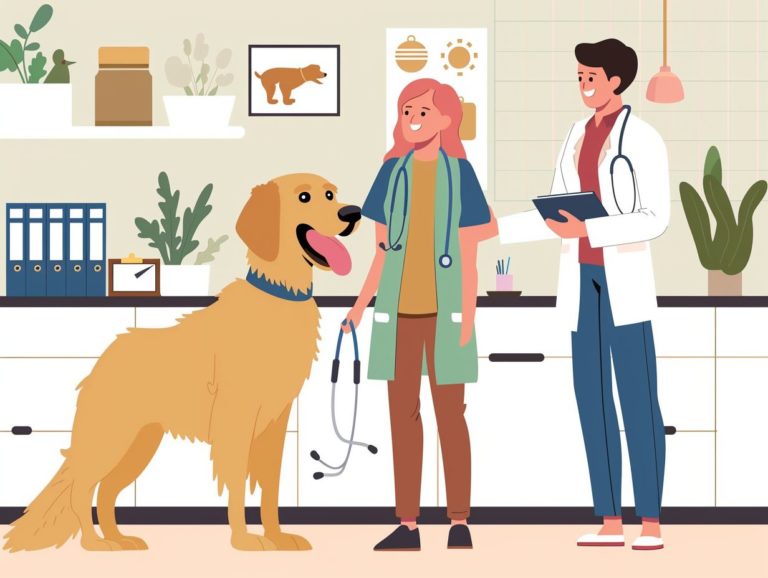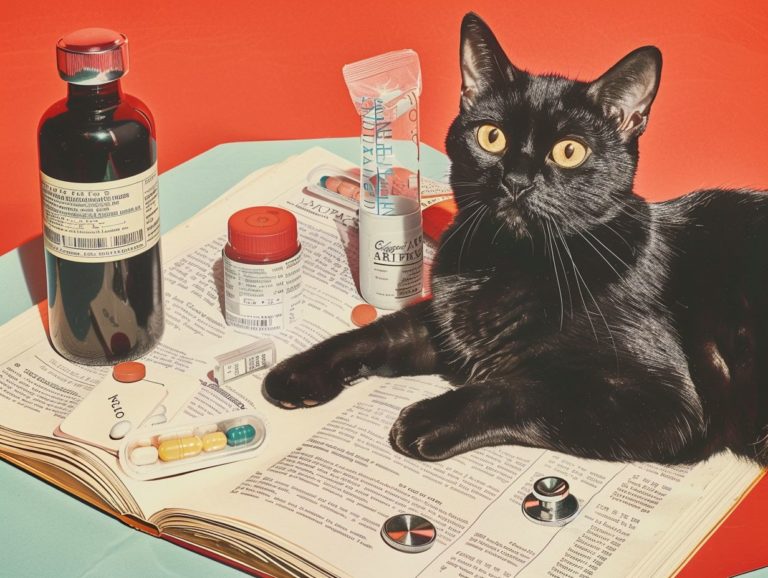The Impact Of Breed On Feline Health Insurance Costs
This article discusses feline health insurance, examining what it entails and the factors influencing the cost of insuring your cat. It delves into the impact of breed and genetic predispositions, the influence of age and pre-existing conditions, and highlights the breeds that are most expensive to insure.
The article also offers guidance on lowering insurance expenses for specific breeds and presents alternative options to conventional pet insurance. Lastly, it provides recommendations on managing your cat’s healthcare expenses.
Key Takeaways:
Understanding Feline Health Insurance
It is important for pet owners to understand Feline Health Insurance so they can ensure their cats are covered for all medical needs and potential health conditions. By having a feline health insurance plan, pet owners can ensure their pets will receive the necessary medical care without facing financial difficulties.
These types of insurance plans can cover a variety of services from regular check-ups to emergency surgeries. Regular veterinarian visits are important for keeping track of the health of various cat breeds who may be prone to certain health conditions. For example, kidney disease in Persians or heart conditions in Maine Coons.
Insurance can help pay for treatments of frequent health conditions and genetic predispositions that certain cat breeds may experience.
What is Feline Health Insurance?
Feline Health Insurance is a type of pet insurance designed to serve as a financial safety net for pet owners, providing coverage for veterinary visits, treatments, and procedures based on the selected policy and insurance provider. Understanding the various types of coverage available in feline health insurance is crucial for cat owners to make well-informed decisions.
Policies may encompass accidents, illnesses, hereditary conditions, preventive care, and alternative therapies. To file claims, detailed invoices and medical records from the treating veterinarian are usually required. The choice of policy and insurance provider significantly influences coverage limits, reimbursement rates, and exclusions.
Considering that different cat breeds have distinct health needs, it is vital to assess how insurance policies address these unique requirements.
Factors that Affect Insurance Costs
The cost of pet insurance is influenced by factors such as premiums, deductibles, and the level of reimbursement provided by pet insurance companies. Premiums are typically determined based on the age, breed, and baseline health of the insured pet. Certain breeds and younger animals may have lower premiums due to a reduced risk of specific illnesses and accidents.
Deductibles play a significant role in pet insurance costs as they represent the amount that the insured must pay out of pocket before coverage begins. While higher deductibles are associated with lower insurance premiums, they may result in higher immediate costs. The level of reimbursement, which is the percentage of covered expenses that the pet insurance company will pay, is another key factor in overall pet insurance costs. A higher reimbursement rate will lead to higher premiums but will also reduce the out-of-pocket expenses for the insured.
Breed and Genetic Predispositions
Breed and genetic predispositions play a significant role in determining the cost of pet insurance as they can result in higher veterinary expenses and treatment costs, leading insurers to adjust their pet insurance premiums accordingly. A study published in 2018 in the Journal of the American Veterinary Medical Association identified the 12 most common breed-specific genetic diseases and conditions that insurers are likely to consider when pricing their pet insurance policies.
The table provided details the breed-specific genetic conditions and their typical treatment costs for various breeds, such as Labrador Retrievers, German Shepherds, Golden Retrievers, Rottweilers, and others. These conditions include Hip Dysplasia, Progressive Retinal Atrophy (PRA), Elbow Dysplasia, Bilateral Cataracts, Patellar Luxation, Congenital Deafness, Entropion, Hypothyroidism, Epilepsy, Dilated Cardiomyopathy (DCM), and Von Willebrand’s Disease (VWD). The treatment costs for these conditions range from $200 to $6,000, depending on the specific disease and breed.
Source: Megan D. Niederwerder and K. Max Jader – Breed-specific disease prevalence in dogs and cats: A narrative review of the literature – Journal of the American Veterinary Medical Association Vol 253, No. 3, 2018, p 292-300.
Age and Pre-existing Conditions
Age and pre-existing conditions are two critical factors influencing pet insurance costs, with premiums increasing and coverage becoming limited for older pets and those with medical issues. Insurance companies view age and pre-existing medical conditions as high-risk factors due to the heightened likelihood of pets requiring medical attention.
Elderly pets often suffer from age-related ailments that can incur significant treatment expenses, leading to higher insurance premiums. Coverage for pets with pre-existing medical conditions is typically restricted or excluded altogether by insurance providers, making comprehensive protection difficult to obtain.
It is crucial for pet owners to proactively manage age-related diseases and pre-existing conditions to ensure their pets receive necessary care while also considering the family’s financial well-being.
Most Expensive Breeds for Health Insurance
The most expensive cat breeds for health insurance are pricier due to their unique genetic makeup and predisposition to certain medical conditions. This necessitates pet owners to be mindful of their cat’s specific risk factors and insurance policy discrepancies.
For instance, Siamese and Persian breeds typically have higher insurance premiums as they are more prone to respiratory and dental problems. In contrast, Maine Coon and Ragdoll breeds tend to have lower insurance costs because of their overall good health and fewer common genetic issues.
Therefore, it is crucial for pet owners to be well-informed about the particular medical conditions their cat breed is susceptible to.
Top Breeds with High Insurance Costs
The most expensive cat breeds to insure are those with breed-specific characteristics that make them prone to high veterinary costs. This is often seen in breeds that have a high incidence of dental issues and other common conditions and diseases that can be costly to treat.
Cats with luxurious fur, such as Siamese, Maine Coon, Ragdoll, Himalayan, and Persian breeds, have long silky coats that can easily become matted if not properly maintained, leading to skin infections and other dermatological problems.
Breeds with flat faces, like Persian, Scottish Fold, Siamese, Ragdoll, British Shorthair, and Sphynx, are at higher risk of respiratory issues due to their short muzzles. Scottish Folds, in particular, may experience chronic ear infections due to their folded ear cartilage. These breeds are also more susceptible to eye issues that may require specialized treatments.
The frequency of these breed-specific vulnerabilities justifies the higher premiums that owners of these breeds pay for pet insurance.
Ways to Lower Insurance Costs for Specific Breeds
Reducing pet insurance costs for specific cat breeds can be achieved through discounts, adjusting premiums based on a cat’s size, and ensuring regular exercise to lower the risk of costly accidents and illnesses.
One effective method to decrease insurance expenses for certain cat breeds is to seek out discounts offered by insurance companies, which can be influenced by factors such as the cat’s age, medical history, and spaying or neutering status.
Tailoring premiums according to your cat’s size can impact the overall cost, particularly as larger cats may be more susceptible to various health conditions.
Encouraging your cat to maintain a healthy weight and engaging them in regular exercise can help minimize the chances of expensive veterinary visits.
Tips for Reducing Expenses
Factors that can assist responsible pet owners in managing insurance expenses include insurance coverage, the life expectancy of pets, and claims management tactics.
Pet owners can avoid overpaying on insurance policies by choosing appropriate coverage levels based on the age, breed, and common health risks of their pets. Understanding the typical life expectancy of pet breeds enables owners to anticipate potential medical issues and financially prepare for future veterinary costs.
Timely and accurate submission of information following a claim can expedite the reimbursement process and foster a positive relationship with the insurance provider. Responsible cost-control strategies for insurance do not involve reducing coverage but instead involve strategically selecting the right types and levels of insurance to meet the specific needs of one’s pets.
Alternative Options to Traditional Insurance
Pet owners have the option to explore alternative approaches to traditional pet insurance, such as self-insurance, captive insurance, and risk-sharing pools. These alternatives aim to lower premium costs and tailor coverage to the individual owner’s specific needs based on their risk tolerance.
In a self-insurance plan, owners set aside funds in a dedicated pet care savings account instead of paying premiums to an insurance company, giving them autonomy over fund usage. Captive insurance involves a group of owners forming their own insurance company to customize insurance to their specific requirements. Risk-sharing pools enable owners to collaborate with others facing similar risks, spreading costs among multiple owners and providing more control over the insurance policy and claims process.
Exploring Different Coverage Options
When comparing different coverage options from various pet insurance companies, pet parents can select policies that best suit their needs. Including dental coverage and coverage for common health conditions in pet insurance policies can assist pet parents in affording essential care for their pets.
According to Deanna Bond, Head of Marketing at PetFirst Pet Insurance, “Selecting the right insurance plan not only provides financial security for pet parents, but it also ensures that our pets receive timely care. Policies covering accidents, illnesses, and preventive care offer peace of mind and positively impact our pets’ well-being. Dental coverage can help cover the costs of routine cleanings, extractions, and other dental procedures essential for maintaining overall health.”
Frequently Asked Questions
What is the impact of breed on feline health insurance costs?
The impact of breed on feline health insurance costs refers to how certain cat breeds may be more prone to certain health issues, which can affect the cost of their health insurance coverage.
Which cat breeds are known to have higher health insurance costs?
Some cat breeds that are known to have higher health insurance costs include purebred cats, such as Siamese, Persian, and Bengal cats, due to their genetic predisposition to certain health conditions.
Do mixed breed cats have lower health insurance costs?
In general, mixed breed cats may have lower health insurance costs compared to purebred cats. This is because they have a more diverse genetic makeup, making them less prone to specific health issues.
How can breed affect the cost of feline health insurance?
Breed can affect the cost of feline health insurance in several ways. Some breeds may be more prone to hereditary conditions, which may require more frequent vet visits and treatments, resulting in higher insurance costs. Additionally, certain breeds may have a higher risk for accidents or injuries, which can also impact insurance costs.
Are there any other factors that can influence feline health insurance costs?
Besides breed, other factors that can influence feline health insurance costs include the age of the cat, location, and coverage options. Older cats may have higher insurance costs due to their higher risk for health issues, while location can affect costs depending on the availability of veterinary care and cost of living. Coverage options such as deductibles and annual limits can also impact the overall cost of insurance.
Do all pet insurance companies consider breed when determining feline health insurance costs?
No, not all pet insurance companies consider breed when determining feline health insurance costs. Some may have breed-specific policies or exclusions, while others may base their premiums on overall risk factors rather than specific breeds.


